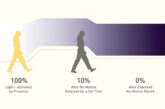
When testing, remembering which connection you need to make for any particular test can be a difficult exercise. Brendan Beaver, Sales Manager for Metrel, explains why help should always be on hand from modern MFT units.
Much of an electrical contractor’s life is spent installing electrical systems, cutting holes, pulling cables, making connections, installing consumer units and worrying about costs.
Testing may occupy as little as 5% of your time, probably less, yet it is still important. It confirms that you’ve completed the task successfully, and that you have a safe system to hand over to your customer.
Most importantly, the completed certificate is the first stage in the process of finally getting paid for the job.
Help, I need somebody
Test meter manufactures have, over the years, had the idea of supplying ‘help’ screens to save you from those ‘senior’ moments.
However, they’ve often struggled to implement such a useful function because of the technology. The custom LCD that some testers utilise can limit the flexibility of the display, and therefore how much information can displayed.
By using more expensive dot matrix displays, Metrel has pioneered the use of these help screens.
The early ones on the monochrome displays, such as the MI3125 multifunction installation tester, were difficult to follow, but were still better than nothing, or guessing.
They were great at reassuring the technician that he had remembered it right.
With the advent of the full colour, touch-screen used on the latest multifunctional installation testers, such as the hugely capable MI3155 and the popular MI3152, Metrel has stolen a march.
The screen is crisp and easy to read, and the tests are colour-coded to make it quicker to choose the right one.
Once the correct test is selected, should brain fade strike, there is a help screen explaining the connections required for that test. Because they’re in colour, clearly drawn with high res pictures, they’re simple to follow.
A great example – the auto RCD test
Another benefit of these screens is the ability to impart a lot of information to the operator, so they don’t waste time doing the wrong test.
For example, during a RCD test, the RCD test type, the actual test or tests that will be conducted, the phase angles and the connections are all displayed in plain English rather that resorting to icons, which can be easy to understand.
The best example of this is demonstrated during an auto RCD test. Having selected the test to be undertaken, a screen with the individual tests to be done is then displayed, along with the details of the RCD type to be tested. This can be changed with the touch of a finger.
Should the operator suffer from a brain blank, touching the ‘?’ symbol brings up a reminder of the connections, and a simple touch of the test button then starts the sequence.
All the operator has to do is reset the RCD and then return to the tester to have all eight results displayed at once, so no scrolling through the results!
For more information on the range of MFT units available from Metrel visit: www.metrel.co.uk











